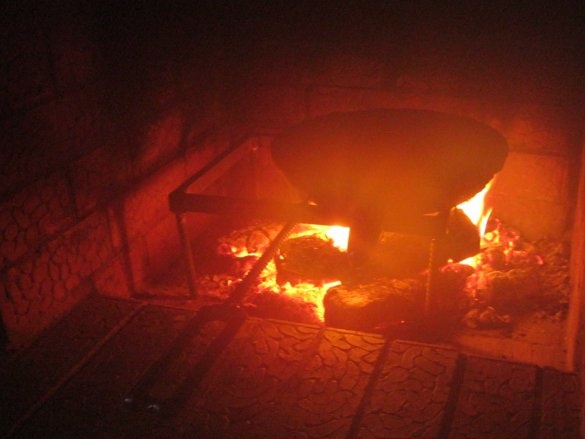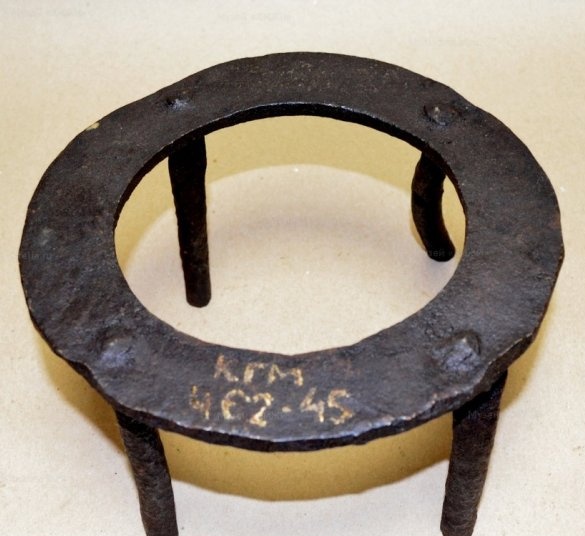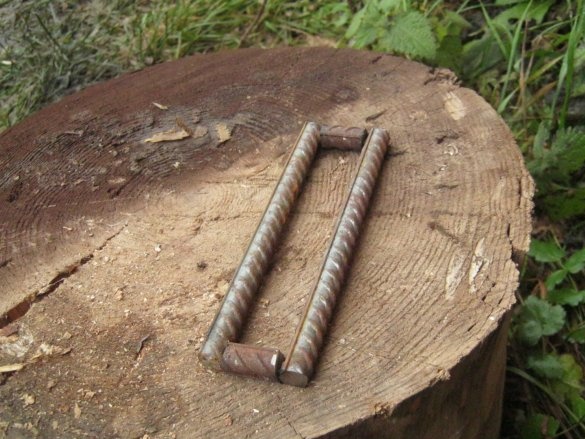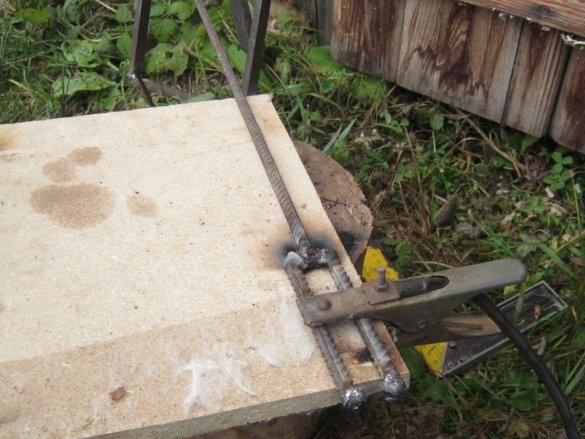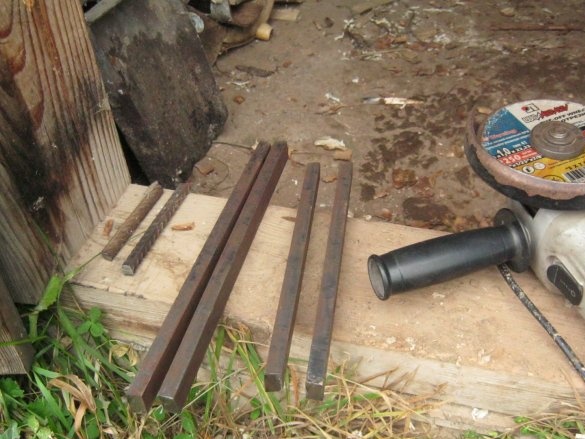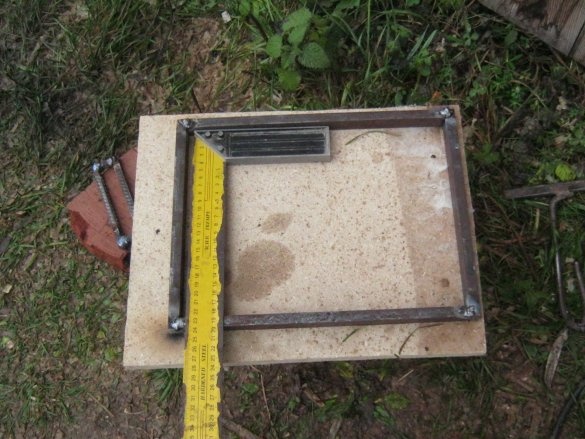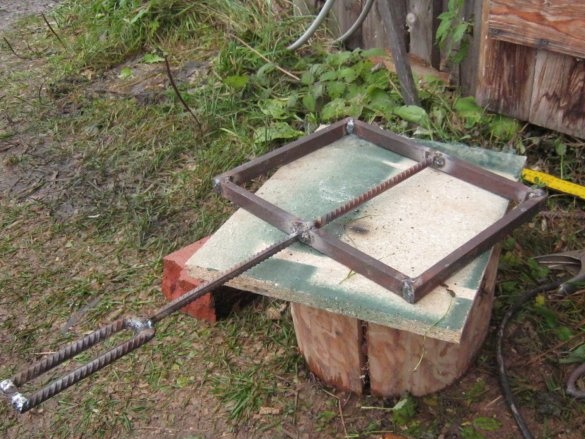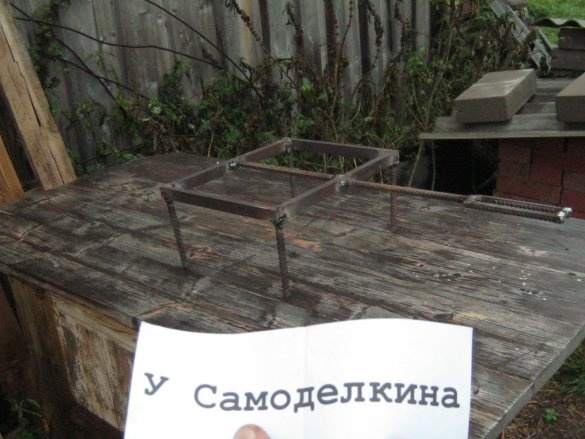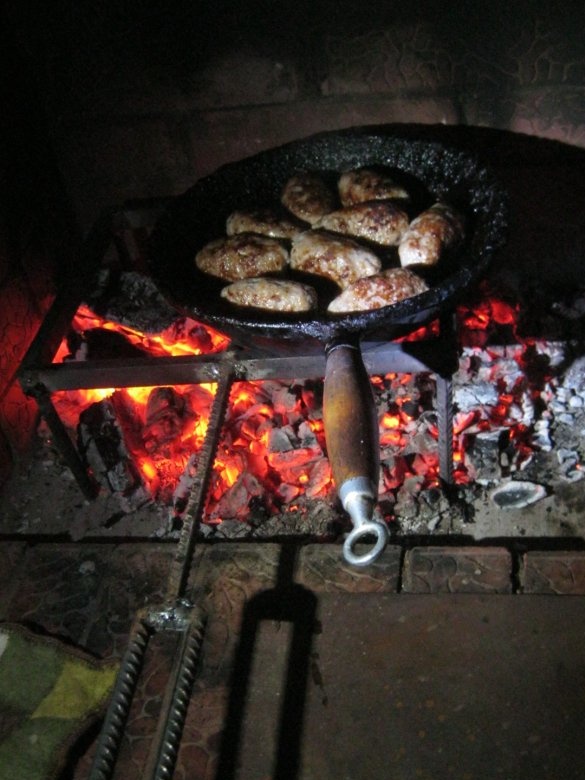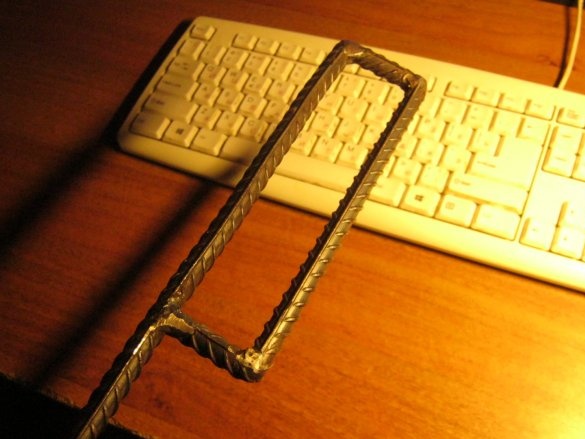Tagan, or more commonly used, diminutively affectionate, is a thing remarkably useful. Especially in a rustic house with a fireplace. Taganok - the essence, stand for pots, kettles, pans to cook on an open fire or charcoal. Often, tourists make such constructions - a city man rarely has to deal with real fire, except in hikes and on picnics. Tourist Taganok corresponds to a stationary stove unless functionally. The principles by which such devices are constructed are very different. In the tourist case, the taganka, like all other equipment, should first of all be as light as possible and occupy a minimum of space in the stowed position, its durability can be minimal, like with a projection lamp - if only it would be enough for a session (hike).
The home option is opposite, it is desirable to make reliable convenient and durable. Its mass and ease of carrying, the tenth matter.

Here we consider the manufacture of a simple taganka for a home fireplace.
The fireplace is an excellent design! Of course - efficiency, consumption of firewood. Not too practical and economical device, but how much fun! We have long been adapted to bake all sorts of goodies in a charcoal fireplace. It looked something like this - a specially stocked red brick was placed under the rear wall of the fireplace before kindling. On the edge. Firewood was laid. After they burned up, large unburned firebrands, if they happened towards the end of the firebox, rolled back into the corner with a poker, the coals were evenly distributed, and an equipped barbecue grill was placed on the brick inside and the exposed brick outside (sometimes used and logs). All this was not too convenient, although it worked.
Once, a very, very long time ago, from the corner of my eye I saw on television a broadcast of an overseas cooking program. Someone was cooking in the hearth of a "hunting lodge" on an open fire. A small table set to the hearth, a small frying pan with the longest handle on a high taganka in a blazing fire. Dexterity and dexterity with which he managed with all this equipment was bewitching.
So, we summarize. Need a convenient stand for cooking in the fireplace. Let it be rectangular. So it will be easier to make it from scraps of standard steel by welding straight parts. This form is very suitable for skewers, barbecue and pans. Practice has shown that sometimes the hot parts inside the fireplace have to be moved or removed. They make it a poker, which is inconvenient and dangerous. It would be much more convenient to equip the taganka itself with a handle, especially since the restrictions on weight and dimensions of the stationary structure are removed - tea is not in a backpack to carry on you.
Taganka is old, when cooking in the hearth was not an extravagant quirk, but a harsh necessity, was a kind of round-legged. Kruglyash, clearly forged, legs too. A bowler pot with a semicircular bottom and a kettle with a flat fit comfortably.
Design
The external size of the frame-stand was determined by the barbecue, in order to put the pan without damage to the contents, it was necessary to provide a partition. The handle is long, but not too sticking out of the fireplace. The legs are the height of the brick on the edge, and this is 120 mm. Practice has shown that this height is convenient. Material - fittings. Something is in these corrugated rods, a kind of industrial severity. Having rummaged in the pieces of iron, I found a decent thick strip of still blacksmithing - it was decided, it will be the basis, the rest of the fittings. Extra weight will not allow to outweigh the long handle. It is better to make the handle for grasping parallel to the main plane of the taganka, then it will be more convenient to hang it on the carnation during storage.
What was needed for the manufacture.
Some scrap metal glands, a small welding inverter with accessories, a small angle grinder. Safety glasses and earphones, good electric extension cord. Roulette, crayon, square.
Let's get started. With a thin abrasive disk, I cut off the workpieces and welded the handle, attached a bar to the middle. All of the fittings are 12 mm.
From the strip I cut the blanks for the main frame.
In order not to get, instead of a flat O, he sacrificed an unfit piece of chipboard to some bizarre volumetric figure.
When assembling, I used a square so that the angles were at least somewhat similar to straight ones. In order not to burn the piece of wood too much, the frame on it was only assembled “on a live thread”. Carefully boil the compounds later, on weight.
I divided the frame in half with a partition for a frying pan or a kettle, shortened the handle in place, and assembled it. All connections are thoroughly boiled.
Cut off four legs of 120 mm, welded. Grinding the ends of the legs, he achieved an even state of the piece of iron, without swinging, with a thick abrasive circle, he dulled the sharp edges, especially on the handle.
Actually, all the work was carried out while the wood burned. Managed to the coals.
I started the tests.
Practice has shown.
Cooking on charcoal became easy and pleasant. Frying pan, more than aspirations, is excellent. The temperature of the procedures can be adjusted over a fairly wide range by picking up the coals with a poker, moving the pan. By the way, cooking on charcoal does not smoke dishes. Roasting on a wire rack or skewers - as usual. The Taganka handle, in spite of the length, manages to heat up, you have to take it with a cloth or a tack, however, it is still convenient. The only point is that you can try to make the handle at an angle so that it looks to the side. Then it will be more convenient to wield a poker under the taganka. The handle in this case can be made somewhat simpler, with its asymmetric arrangement, it will even be appropriate. Here's how on the poker.
Babay Mazay, October, 2019


